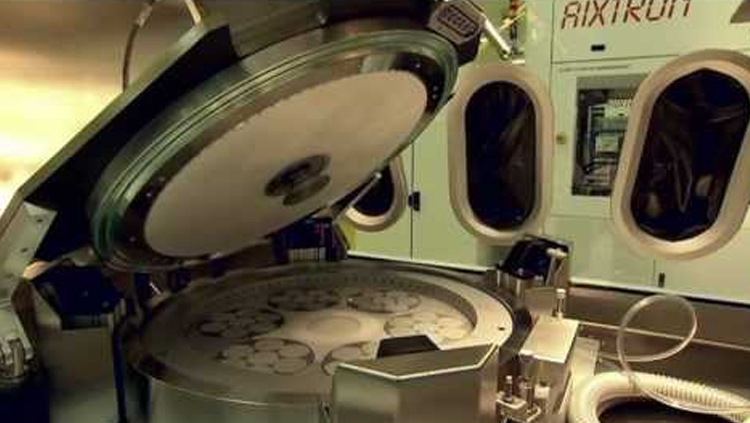News Article
UV LEDs to account for 28% of total UV lamp market by 2016
The 400-315nm UVA business is currently dominating the UV LED market and will remain to for at least the next five years. These LEDs employ III-nitride based materials
According to Yole Développement's Technology & Market study “UV LED Market”, the UV LED market will reach more than $150 million in 2016.
“Thanks to its compactness, lower cost of ownership and environmental friendly composition, UV LEDs continue replacing traditional UV lamps in incumbent applications, but will also create new applications, especially portable ones”, explains Pars Mukish, Technology & Market Analyst, LED & Compound Semiconductors at Yole Développement.
The market research firm expects UV LED business to grow from $32.5 million in 2011 to more than $150 million in 2016. In this period, the million dollar UV LED market will grow by a factor of 5 whereas the traditional UV lamps market will grow by only a factor of 1.5.
.jpg)
In 2011, LEDs were sold mostly in the UVA /B spectrum, especially in upper wavelengths, between 365 and 400 nm. More than 90% of the UV LED market (outside of R&D) was still covered by UV curing, counterfeit detection and medical & instrumentation applications requiring UVA/B sources.
.jpg)
In the same year, UVC LEDs, were still mainly sold for R&D and scientific instrumentation purposes, but 2012 should see the commercialisation of the first UV LED based purification system.
UVA business is currently the main UV LED market and will remain so for at least the next 5 years. It accounted for about 90% of the million dollar market in 2010 and is anticipated to take about an 85% market share in 2016.
UV LEDs are totally changing the value & supply chains
The booming UV LED market has attracted several new players from different backgrounds over the past few years. These include traditional mercury lamp suppliers, traditional UV curing system suppliers, pure UV LED curing system suppliers, visible LED suppliers and substrate suppliers. Each type of player will adopt a different strategy to capture the maximum value created by this disruptive technology.
“At the device level, Asian companies, especially Japanese and Taiwanese ones, have taken the lead on the UV LED market but recently, some Chinese companies have also entered the playground,” says Mukish. “This should increase competition, reduce prices and enable mass applications at middle/long term”.
As for visible LEDs, for the last few years, the value chain has been expanding with the arrival of pure players at mainly the packaging and system level. This has allowed an increase in performance of UV LEDs with specific package developments and enabled an easier technological transition with traditional UV system manufacturers.
UVA LEDs still dominate thanks to the UV curing business boom
Key applications for UVA are UV curing, counterfeit detection and photocatalyst air purifiers. Among these, the most dynamic and important market is the UV curing business where UV LEDs compete with traditional mercury lamps and offer significant advantages in terms of cost of ownership and system miniaturisation.
In 2012, two professional associations dedicated to UV LED curing were formed, showing the robustness and the credibility of UV LED technology. Also, recent improvements greatly increased the power output available at window surface of UV LEDs to 16W/cm² in 2011.
UVC LEDs are still in development but commercialisation should be earlier than expected
Water & Air purification are the potential next high volume applications for UVC LEDs. In 2011, the UVC LED industry achieved a new milestone of saturation. For example, Crystal IS was acquired by Japanese group, Asahi Kasei . The partnership of Dot Metrics, the first pure UV LED, with Aquionics, a water purification company, announced that it would launch its first commercial product in 2012. Another player is, SETi, which is increasing its production capacity by a factor six with a $20 million investment.
In parallel, numerous research results published in 2011 have demonstrated an impressive improvement in the optical power output of UV LEDs; up to ten times, compared to 2010. Hence, it is expected that UVC LEDs should penetrate those key applications in 2014 after having completely solved the efficiency, lifetime and cost challenges.
Growth of the UVC market will also be connected to the availability of bulk AlN substrates that could improve the performance of the devices.
More than 50% performance improvement for bulk AlN based UV LEDs in 2011
Templates (AlN-on-sapphire) are the substrate of choice for UVA/B applications due to their lower cost and sufficient performance.
“But for UVC applications, the competition with bulk AlN is increasing as such substrates could offer improvement of lifetime and power output of the UV LEDs”, explains Pars Mukish. “For example, in 2011, Crystal IS has improved its bulk AlN based UV LED results by a factor x 20”.
Several players are also aiming to commercialise 2” bulk AlN wafers by the end 2012. So, the time to market for UVC applications based on bulk AlN would probably be in the 2013-2015 period.
Yole does however point out that up to now, no research has clearly demonstrated the positive effects of bulk AlN substrates on UV LEDs performance, and so the future commercial success of such substrates for UVC purification applications is still under debate.

































